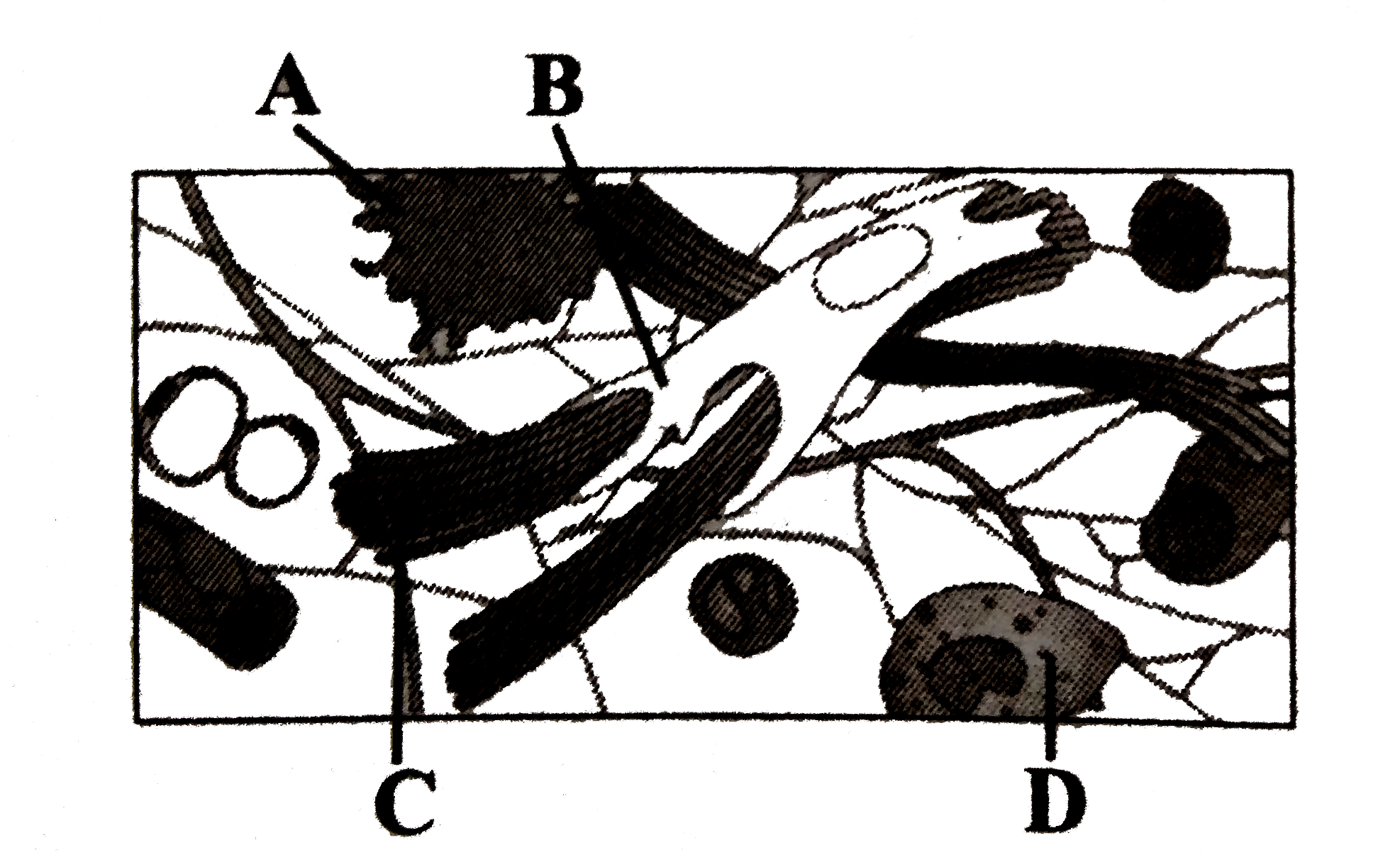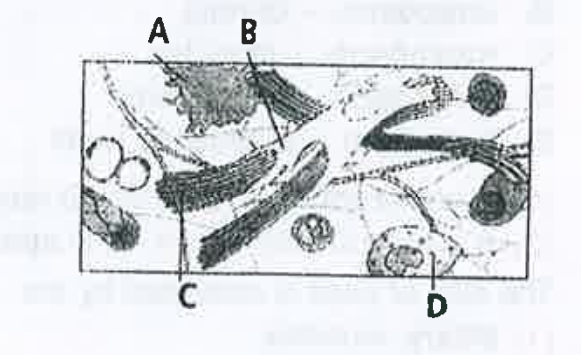Given below is a list of features found in a specific tissue.
(a) unstriped
(b) fusiform
(c) nucleated
(d) cannot be controlled directly
(e) bundled in connective tissue sheath
In which of the following parts would you find layers of this tissue ?
Wall of stomach
Wall of heart
Biceps and triceps of arm
Inside the brain
The correct Answer is:A
To solve the question regarding the specific tissue with the given features, let's analyze each feature step by step:
Step 1: Identify the Features
1. Unstriped: This indicates that the tissue is smooth and lacks striations, which is characteristic of smooth muscle tissue.
2. Fusiform: This means that the cells are spindle-shaped, tapering at both ends, which is also a feature of smooth muscle.
3. Nucleated: This indicates that the cells contain a nucleus, which is true for smooth muscle cells as they are typically uninucleated.
4. Cannot be controlled directly: This suggests that the tissue is involuntary, meaning it operates without conscious control, which is again a characteristic of smooth muscle.
5. Bundled in connective tissue sheath: This indicates that the smooth muscle fibers are organized and surrounded by connective tissue.
Step 2: Determine the Location of the Tissue
Given these features, we need to identify where this type of tissue (smooth muscle) is found in the body.
- Wall of the Stomach: Smooth muscle is present here, allowing for involuntary contractions that aid in digestion.
- Wall of the Heart: This contains cardiac muscle, which is striated and involuntary, but not smooth muscle.
- Biceps and Triceps of Arms: These are composed of skeletal muscle, which is striated and voluntary.
- Inside the Brain: While there are smooth muscle fibers in some blood vessels, they do not typically take the form of layers as described.
Conclusion
Based on the analysis, the correct answer is that layers of this tissue can be found in the wall of the stomach.
Final Answer
Wall of the stomach
---
1. Unstriped: This indicates that the tissue is smooth and lacks striations, which is characteristic of smooth muscle tissue.
2. Fusiform: This means that the cells are spindle-shaped, tapering at both ends, which is also a feature of smooth muscle.
3. Nucleated: This indicates that the cells contain a nucleus, which is true for smooth muscle cells as they are typically uninucleated.
4. Cannot be controlled directly: This suggests that the tissue is involuntary, meaning it operates without conscious control, which is again a characteristic of smooth muscle.
5. Bundled in connective tissue sheath: This indicates that the smooth muscle fibers are organized and surrounded by connective tissue.
Given these features, we need to identify where this type of tissue (smooth muscle) is found in the body.
- Wall of the Heart: This contains cardiac muscle, which is striated and involuntary, but not smooth muscle.
- Biceps and Triceps of Arms: These are composed of skeletal muscle, which is striated and voluntary.
- Inside the Brain: While there are smooth muscle fibers in some blood vessels, they do not typically take the form of layers as described.
Based on the analysis, the correct answer is that layers of this tissue can be found in the wall of the stomach.
Wall of the stomach
Similar Questions
Knowledge Check
Consider the following statements each with one or two blanks.
(i)Each pectoral girdle consists of a (A) and (B) .
(C) is a condition of rapid spasms (wild contractions) in muscle due to low Ca++ in body fuild.
Each organised skeletal muscle in our body is made of a number of (D) held together by a common collagenous connective tissue layer called (E) .
Which one of the following options correctly fills the blannks in any two the statements ?A(C ) - Muscular dystrophy, (D) - fascia, (E) - fascicleB(A) - Clavicle, (B) - scapla, (C ) - TetanyC(A) - ilium,(B) ischium, (D) - fascicles, (E) - fasciaD(C )-Myasthenia gravis, (D)-Fascicles, (E) - fasciaGiven is the diagrammatic sketch of a certain type of connective tissue
Identify the parts labelled as A,B,C and D and select the correct option.
 A A B C D Macrophage Fibroblast Collagen fibres Mast cellB A B C D Mast cell Macrophage Fibroblast Collagen fibreC A B C D Macrophage Collagen fibre Fibroblast Mast cellD A B C D Mast cell Collagen fibre Fibroblast Macrophage
A A B C D Macrophage Fibroblast Collagen fibres Mast cellB A B C D Mast cell Macrophage Fibroblast Collagen fibreC A B C D Macrophage Collagen fibre Fibroblast Mast cellD A B C D Mast cell Collagen fibre Fibroblast Macrophage
Study the diagram given below and answer the questions that follow :

Which tissue is found in this structure?
View SolutionWhich one of the following is not a fundamental tissue ?
(a) Parenchyma
(b) Collenchyma
(c) Chlorenchyma
(d) Aerenchyma
View SolutionNote the following
(A) It forms the lining of the cavities of
alveoli of the lungs
(B) it forms the lining of wet surfaces like
buccal cavity and oesophagus
(C) it occurs in the ducts of sweat glands
(D) it forms the lining of salivary glands and
sweat glands
(E) it is a loose connetive tissue
Which of the above are associated with simple epithelial tissue ?
View SolutionThe following list contains some connective tissue . Which of these is/are present beneath our integument ?
(a.) Areolar tissue
(b.) Adipose tissue
(c.) Dense irregular connective tissue
View SolutionGiven is the diagrammatic sketch of a certain type of connective tissue
Identify the parts labelled as A,B,C and D and select the correct option.

View SolutionGiven below is the diagrammatic sketch of a
cartain type of connective tissue. Ientify the
parts labelled A, B, C and D and select the
right option about them

View Solution
